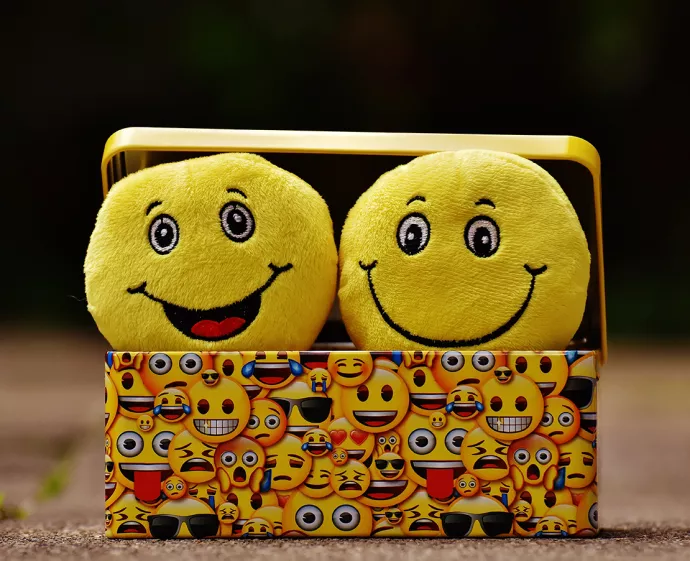
Would an emoji by any other name smile as sweet?
For undergraduate student Boting Gao, emojis are more than just an image to encapsulate a sentiment: she sees them as a tool to examine differences in emotions, depending on a person’s cultural background, and holding the potential to further inform our usage of digital communications.
Working under the supervision of Professor Doug VanderLaan in the Department of Psychology, their findings were recently published in Cyberpsychology, Behavior, and Social Networking.

“Boting was a student in my cross-cultural psychology class, and a couple of years ago had the idea for this study,” says VanderLaan. “I was so impressed that I decided to supervise her for an independent research project.”
The study Gao undertook set out to test people’s perceptions of how emotions are interpreted when using emojis, or what are referred to as “paralinguistic cues” that are used to express thoughts and emotions in communication platforms such as email, texts, and social media. Building on previous research that demonstrates people from Western cultures pay more attention to in-person cues from the mouth in facial expressions in gauging emotion compared to those from Eastern cultures who focus more on the eyes, Gao tested for differences of perception of emotion where the eyes or mouth of an emoji were manipulated. She says using these images might carry more weight than we think.
“Communication using emojis or emoticons may be considered more effective than using words alone because they deliver emotions in a more visually direct manner,” says Gao.
“However, emojis are not usually labeled with a fixed meaning and are subject to interpretation, which can vary depending on a person’s cultural background.”
She was able to recruit participants for her online study from around the world and categorized them based on their geographic location as being from either Western or Eastern culture. Participants were asked to rate their perceptions of nine different emojis that presented a range of emotions through the eyes and mouth, either conveying happy or sad for both the eyes and mouth of the emoji, or sometimes a scramble of the two with sad eyes paired with a happy mouth.
Their results supported the team’s predictions of significant cultural differences in perceived emotions: with at least six of the emojis, Westerners relied mostly on the mouth for rating emotion while Easterners based their assessment on the eyes.
Future studies might factor in other emotions, such as anger or worry, and what kinds of culturally different perceptions that could emerge.
Overall this work sheds light on the complexities associated with digital interactions, particularly among people communicating from different parts of the world.
“This study suggests that when using technologies and employing emojis in things like instant messaging and social media, people might perceive the intent of the communication differently during exchanges with others of the same culture compared with people from a different cultural background,” says Gao.
“And as interactions among individuals of varying cultural backgrounds increases and people continue to use technologies that afford opportunities for these kinds of paralinguistic communication, it is valuable to better understand how such communication is likely to be perceived or in some cases misperceived.”
